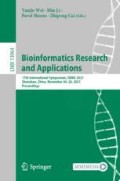Abstract
Drug drug interactions (DDIs) are crucial for drug research and pharmacologia. Recently, graph neural networks (GNNs) have handled these interactions successfully and shown great predictive performance, but most computational approaches are built on an unsigned graph that commonly represents assortative relations between similar nodes. Semantic correlation between drugs, such as degressive effects or even adverse side reactions (ADRs), should be disassortative. This kind of DDIs networks can be represented as a signed graph taking drug profiles as node attributes, but negative edges have brought challenges to node embedding methods. We first propose a signed graph filtering-based convolutional network (SGFCN) for drug representations, which integrates both signed graph structures and drug profiles. Node features as graph signals are transited and aggregated with dedicated spectral filters that capture both assortativity and disassortativity of drug pairs. Furthermore, we put forward an end-to-end learning framework for DDIs, via training SGFCN together with a joint discriminator under a problem-specific loss function. Comparing with signed spectral embedding and graph convolutional networks, results on two prediction problems show SGFCN is encouraging in terms of metric indicators, and still achieves considerable level with a small-size model.
Access this chapter
Tax calculation will be finalised at checkout
Purchases are for personal use only
References
Bang, S., et al.: Polypharmacy side effect prediction with enhanced interpretability based on graph feature attention network. Bioinformatics (2021). https://doi.org/10.1093/bioinformatics/btab174
Dai, Y., et al.: Drug-drug interaction prediction with Wasserstein adversarial autoencoder-based knowledge graph embeddings. Briefings Bioinform. 1–15 (2020). https://doi.org/10.1093/bib/bbaa256
Dong, X., et al.: Graph signal processing for machine learning: a review and new perspectives. IEEE Sign. Process. Mag. 37(6), 117–127 (2020). https://doi.org/10.1109/MSP.2020.3014591
Gionis, A., et al.: Mining signed networks: theory and applications. In: Proceedings of the World Wide Web Conference, pp. 309–310 (2020). https://doi.org/10.1145/3366424.3383113
Hu, B., Wang, H., Yu, Z.: Drug side-effect prediction via random walk on the signed heterogeneous drug network. Molecules 24(20), 3668 (2019). https://doi.org/10.3390/molecules24203668
Law, V., et al.: Drugbank 4.0: shedding new light on drug metabolism. Nucl. Acids Res. 42(1), D1091–D1097 (2014). https://doi.org/10.1093/nar/gkt1068
Li, Q., et al.: Label efficient semi-supervised learning via graph filtering. In: Proceedings of IEEE/CVF Conference on Computer Vision and Pattern Recognition (CVPR), pp. 9582–9591 (2019). https://doi.org/10.1109/CVPR.2019.00981
Lin, X., et al.: KGNN: knowledge graph neural network for drug-drug interaction prediction. In: Proceedings of Twenty-Ninth International Joint Conference on Artificial Intelligence (IJCAI), pp. 2739–2745 (2020). https://doi.org/10.24963/ijcai.2020/380
Liu, T., Cui, J., Zhuang, H., Wang, H.: Modeling polypharmacy effects with heterogeneous signed graph convolutional networks. Appl. Intell. 51(11), 8316–8333 (2021). https://doi.org/10.1007/s10489-021-02296-4
Ma, T., et al.: Drug similarity integration through attentive multi-view graph auto-encoders. In: Proceedings of Twenty-Seventh International Joint Conference on Artificial Intelligence (IJCAI), pp. 3477–3483 (2018). https://doi.org/10.24963/ijcai.2018/483
Marinka, Z., Monica, A., Jure, L.: Modeling polypharmacy side effects with graph convolutional networks. Bioinformatics 34(13), i457–i466 (2018). https://doi.org/10.1093/bioinformatics/bty294
Shi, J.-Y., Mao, K.-T., Yu, H., Yiu, S.-M.: Detecting drug communities and predicting comprehensive drug–drug interactions via balance regularized semi-nonnegative matrix factorization. J. Cheminform. 11(1), 1–16 (2019). https://doi.org/10.1186/s13321-019-0352-9
Torres, N.B., Altafini, C.: Drug combinatorics and side effect estimation on the signed human drug-target network. BMC Syst. Biol. 10(74) (2016). https://doi.org/10.1186/s12918-016-0326-8
Wishart, D.S., et al.: Drugbank 5.0: a major update to the drugbank database for 2018. Nucl. Acids Res. 46(D1), D1074–D1082 (2017). https://doi.org/10.1093/nar/gkx1037
Wu, Z., et al.: A comprehensive survey on graph neural networks. IEEE Trans. Neural Netw. Learn. Syst. 32(1), 4–24 (2021). https://doi.org/10.1109/TNNLS.2020.2978386
Xu, B., et al.: Graph convolutional networks using heat kernel for semi-supervised learning. In: Proceedings of Twenty-Ninth International Joint Conference on Artificial Intelligence (IJCAI), pp. 1928–1934 (2020). https://doi.org/10.24963/ijcai.2019/267
Yu, H., et al.: Predicting and understanding comprehensive drug-drug interactions via semi-nonnegative matrix factorization. BMC Syst. Biol. 12(Suppl 1), 14 (2018). https://doi.org/10.1186/s12918-018-0532-7
Zhang, T., Leng, J., Ying, L.: Deep learning for drug drug interaction extraction from the literature: a review. Briefings Bioinform. 21(5), 1609–1627 (2020). https://doi.org/10.1186/s12859-020-03724
Zhang, Z., Cui, P., Zhu, W.: Deep learning on graphs: a survey. IEEE Trans. Knowl. Data Eng. 32(1), 4–24 (2020). https://doi.org/10.1109/TKDE.2020.2981333
Acknowledgments
This work is supported by the National Natural Science Foundation of China under Grant No. 62077014, and also supported by the Shenzhen KQTD Project(No. KQTD20200820113106007). The authors acknowledge Molecular Basis of Disease (MBD) at Georgia State University for supporting this research.
Author information
Authors and Affiliations
Corresponding author
Editor information
Editors and Affiliations
Rights and permissions
Copyright information
© 2021 Springer Nature Switzerland AG
About this paper
Cite this paper
Chen, M., Pan, Y., Ji, C. (2021). Predicting Drug Drug Interactions by Signed Graph Filtering-Based Convolutional Networks. In: Wei, Y., Li, M., Skums, P., Cai, Z. (eds) Bioinformatics Research and Applications. ISBRA 2021. Lecture Notes in Computer Science(), vol 13064. Springer, Cham. https://doi.org/10.1007/978-3-030-91415-8_32
Download citation
DOI: https://doi.org/10.1007/978-3-030-91415-8_32
Published:
Publisher Name: Springer, Cham
Print ISBN: 978-3-030-91414-1
Online ISBN: 978-3-030-91415-8
eBook Packages: Computer ScienceComputer Science (R0)

